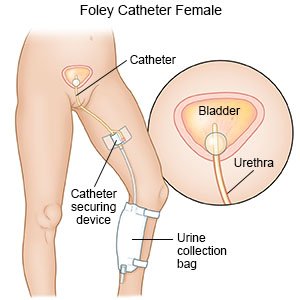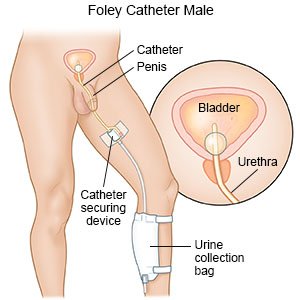Direct Visual Internal Urethrotomy
Medically reviewed by Drugs.com. Last updated on Aug 4, 2025.
What do I need to know about a direct visual internal urethrotomy (DVIU)?
A DVIU is surgery to widen a stricture (narrow area) in your urethra. The urethra is the tube that carries urine from your bladder out of your body. When the stricture is removed, you may be able to urinate more easily.
 |
 |
How do I prepare for a DVIU?
- Your surgeon will tell you how to prepare. If you are having general anesthesia, your surgeon may tell you not to eat or drink after midnight before surgery. Arrange to have someone drive you home after you are discharged.
- Tell your surgeon about all medicines you currently take. He or she will tell you if you need to stop taking any medicine for surgery, and when to stop. Your surgeon will tell you which medicines to take or not take on the day of surgery.
- Tell your surgeon about all your allergies, including antibiotics and anesthesia.
- Practice Kegel exercises, and keep doing them even after surgery. These exercises squeeze your pelvic floor muscles and help them become stronger. Healthcare providers will teach you how to do Kegel exercises.
- You may need blood and urine tests before surgery. Urine tests are used to check for a urinary tract infection (UTI). The UTI will need to be treated with antibiotics before you have a DVIU. You may also need cystoscopy. A cystoscope is a tool used to check your urethra and bladder.
Related medications
What will happen during a DVIU?
- Regional anesthesia may be used for this surgery. You may feel some pressure or pushing with regional anesthesia. You may also feel like you need to urinate during surgery. General anesthesia may instead be used to keep you asleep and free from pain during surgery.
- A camera will be put into your urethra and moved up to the stricture. Your surgeon will use a laser or cutting tool to widen the stricture. A Foley catheter will be placed into your bladder. The catheter moves urine from your bladder through your urethra.


- Your surgeon will use a cystoscope to check your bladder for problems created by the surgery. A cystoscope is a small tube with a light and magnifying camera on the end. Tools may be put through the cystoscope to treat any problems in your urethra or bladder.
What should I expect after a DVIU?
- You may see small amounts of blood in your urine. This is normal. It is also normal to have an increased need to urinate. You may also have burning or mild discomfort when you urinate.
- Medicines may be given to prevent or treat pain or a bacterial infection.
- The Foley catheter may stay in for 3 to 5 days.
- You will be shown how to empty and replace the Foley catheter drainage bag.
What are the risks of a DVIU?
You may bleed more than expected or develop an infection. You may have pain when you urinate, or develop incontinence (trouble controlling your urine). Your urethra may be damaged. If you are a woman, a fistula may develop. This is an opening between your vagina and urethra. You will need surgery to correct a fistula. Even with surgery, you may have a stricture that continues or comes back. You may need other procedures if this happens.
Care Agreement
You have the right to help plan your care. Learn about your health condition and how it may be treated. Discuss treatment options with your healthcare providers to decide what care you want to receive. You always have the right to refuse treatment. The above information is an educational aid only. It is not intended as medical advice for individual conditions or treatments. Talk to your doctor, nurse or pharmacist before following any medical regimen to see if it is safe and effective for you.© Copyright Merative 2025 Information is for End User's use only and may not be sold, redistributed or otherwise used for commercial purposes.
Further information
Always consult your healthcare provider to ensure the information displayed on this page applies to your personal circumstances.
